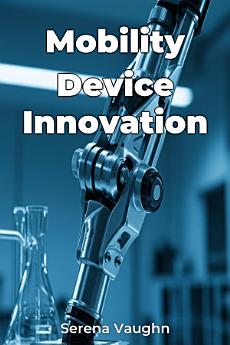Mobility Device Innovation
Über dieses E-Book
The book begins with a historical overview, tracing the evolution of mobility devices. It then progresses through core technologies like advanced materials and sensor technology, dedicating chapters to in-depth examinations of powered wheelchairs, exoskeletons, and smart prosthetics. For example, smart prosthetics now integrate neural interfaces and machine learning, enabling enhanced dexterity and sensory feedback.
The book also addresses ethical considerations and showcases real-world applications, supported by scientific literature, clinical trial data, and user feedback. This book uniquely emphasizes a human-centered design philosophy, prioritizing user needs in device development. Its informative and accessible tone bridges the gap between technical details and practical understanding, making it valuable for engineers, researchers, healthcare professionals, and individuals with mobility impairments alike. By examining these innovations, the book provides insights into assistive technology's potential to transform lives, addressing critical debates surrounding cost, accessibility, and ethical implications.








